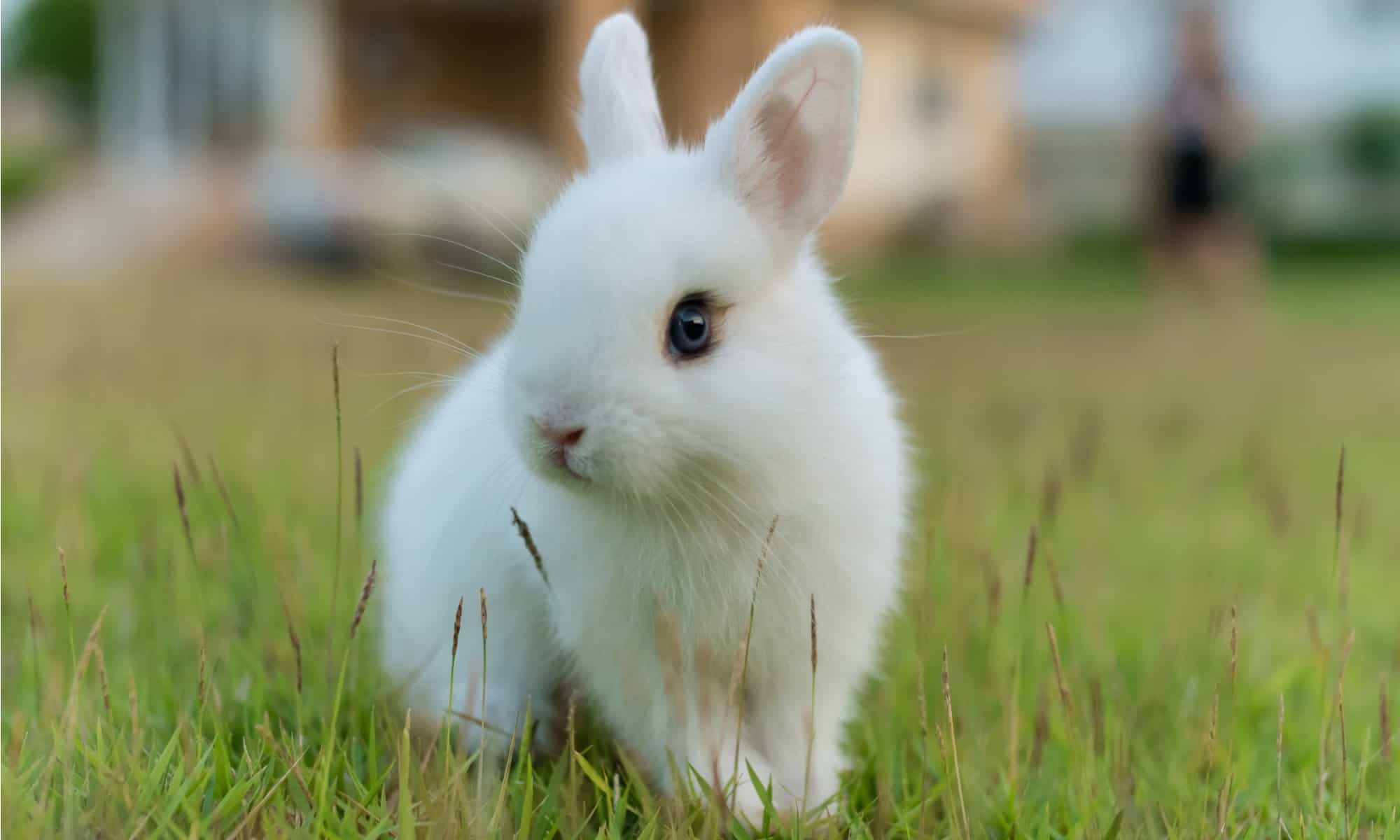Rabbits have the reputation of multiplying at the speed of light. That means those two fluffy pet bunnies you adopted can turn into multiple problems…literally! The key to avoiding this is knowing the difference between male vs female rabbits.
So, what ways are there to differentiate? This article will discuss the differences between male and female rabbits, how to tell a baby rabbit’s gender, and the importance of spaying and neutering pet rabbits.
The Key Differences Between Male and Female Rabbits

The key differences between male and female rabbits are physical appearance, temperament, and behavior.
Let’s discuss these differences in detail below!
Male vs Female Rabbits: Physical Differences

Male and female rabbits are nearly identical in size and weight.
©slowmotiongli/Shutterstock.com
A male rabbit is called a buck, while a female rabbit is termed a doe. Rabbit species don’t have obvious differences in coloring or size. The only way to tell male from female is by checking the genitals. Female rabbits have V-shaped, protruding genitals. This method is accurate but can also be awkward.
Other Physical Differences In Adult Male And Female Rabbits
The physical differences also include the average size of the animal, though females may be smaller. Adult rabbits are between 8 to 20 inches tall and weigh up to 20 pounds, depending on the species. The average lifespan for a rabbit is between 4 to 9 years in the wild and up to 12 years for domesticated species.
Bucks can also be identified by detecting their testicles, which do not descend until 12 weeks.
How To Tell The Gender Of Baby Rabbits

The gender of baby rabbits, or kits, is difficult to identify until they are 12 weeks.
©iStock.com/sduben
Baby rabbits are called kits or kittens. They are born bare and blind like other rodents. Until kits reach 12 weeks, there are no physical differences. A veterinarian should examine the offspring.
Male vs Female Rabbits: Temperament and Behavior

Though male and female rabbits look similar, female rabbits tend to be more territorial and dominant.
Male and female rabbits behave differently. Keep these in mind when adopting a pet rabbit. Both domesticated and wild rabbits exhibit behaviors depending on their gender.
A common belief is that males of many species tend to be more aggressive. However, when it comes to rabbits, the opposite is true. Bucks are more docile, but without mating, they can become destructive. They will also run, thump their foot, spray, and attempt to mount objects.
Does are territorial and may growl or lunge at what they consider a threat, though they do not bite. They like to be in charge and will mount other rabbits in a show of domination, even males. Monitor female rabbits for nesting behavior/ digging holes.
Both sexes grunt or honk to signal they want to mate. This may continue even after spaying or neutering.
The Importance Of Spaying And Neutering A Pet Rabbit

It is advised to neuter or spay rabbits to prevent pregnancy and ensure the rabbits’ well-being.
©iStock.com/Sasiistock
Spaying and neutering pets are often more than preventing pregnancy. They are crucial for their well-being too. This is true for pet rabbits that can mate and reproduce year-round. Unless for breeding, keeping two rabbits apart is not recommended. They become upset knowing another rabbit they can’t interact with is near. Rabbits are social animals and will become sad, destructive, or even ill if isolated.
Male Rabbits And Neutering
Bucks can be neutered at 12 weeks. It is more cost-effective. Neutering a male rabbit will reduce spraying, the likelihood of destructive behavior, and compulsive thumping or mounting. Neutered males will still display protective behavior around females.
Female Rabbits And The Importance Of Spaying
Spaying is not just to avoid surprises but also to reduce the risk of health issues. Unspayed rabbits have a much higher risk of uterine cancer if refrained from mating. They may also suffer from false pregnancy, which involves compulsive nest building and pulling out their fur.
Spaying a doe also reduces burrowing and attempts to escape the enclosure. It also minimizes possible destructive behavior. However, female rabbits will still be territorial and dominant. Does can be spayed at 12 weeks.
Thank you for reading! Have some feedback for us? Contact the AZ Animals editorial team.








